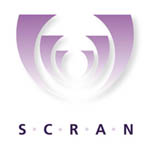
The many digitisation initiatives over the last ten years have made available thousands of new resources for learning and teaching. Students of archaeology now have unprecedented access to detailed views of delicate artefacts, remote landscapes and rare maps, as well as virtual reality reconstructions, interactive panoramas, and all kinds of online archives, databases and tutorials.
But does this increased access to information automatically lead to improved learning? Some of the emerging problems of this new learning landscape include information overload, poorly understood and badly implemented technologies and a lack of time and skills among educators to explore properly what's newly available. On the other hand, one of the most interesting outcomes of the introduction of the new educational technologies has been a renewed and lively debate as to what learning involves and how exactly it takes place.
This article will discuss the potential of digital resources to add value to learning. It will consider current ideas about learning in order to identify some of the key ingredients of a good learning experience. It will then identify the different ways in which a digital resource base can contribute to such an experience. Specifically, it will discuss how the resources contained within SCRAN, an online multimedia resource base for education, can be used in the context of learning and teaching in archaeology.
There is evidence that electronic resources are not yet being fully exploited by the current generation of educators and students. By grounding this discussion of their potential within a sound pedagogic rationale, this paper aims to promote informed use and properly placed enthusiasm for these resources.
Go to article Table of Contents
* Elaine Mowat
Tertiary Education Officer
SCRAN
Abden House
1 Marchall Crescent
Edinburgh EH16 5HW
Email: elainem@scran.ac.uk
Last updated: Wed Aug 28 2002
© Author(s). Content published prior to 2013 is not covered by CC-BY licence and requests for reproduction should usually go to the copyright holder (in most cases, the author(s)). For citation / fair-dealing purposes, please attribute the author(s), the title of the work, the Internet Archaeology journal and the relevant URL/DOI.